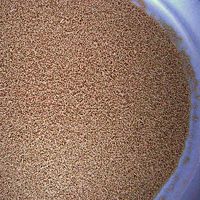My Cart
Your Shopping Cart is currently empty. Use Quick Order or Search to quickly add items to your order!
By Heather Ferguson
Product Developer

Use unicellular organisms to demonstrate essential cellular processes such as molecular transport, reproduction, protein synthesis, metabolism, and cell signaling. A readily available, easily cultured example is Saccharomyces cerevisiae , baker’s yeast. Yeasts are fungi, heterotrophic organisms with cell walls of chitin. While S. cerevisiae can easily be viewed under a microscope, adding a stain such as Congo red or methylene blue helps highlight cellular processes.
In this activity, students run a series of experiments with test tubes containing either boiled or unboiled yeast to determine which tube contains living cells. In the process, students observe molecular transport, reproduction, and metabolism. This high school activity takes approximately 45 min and is easily adjusted for various class sizes.
Grades 9–12
Unifying Concepts and Processes
Science as Inquiry
Life Science
Ensure that your students understand and adhere to safe laboratory practices when performing these activities, including use of appropriate PPE (goggles, gloves, and aprons). Even though the yeast used poses no known human health hazard, have students wash their hands thoroughly after handling these or any cultures.
Discuss the differences between the 2 yeast cultures with your students after they have completed the activity. Boiling denatured the proteins in the yeast, preventing many essential cellular processes from being carried out. Ask students to share and describe what they observed and to propose explanations for their observations of molecular transport and metabolism. Active yeasts carry out active transport to remove stain from inside their cells, so they will become colorless during the period of observation. Denatured yeast cells absorb the stain. The test tube containing active yeasts produces carbon dioxide as the cells use the sugar as an energy source in respiration. Students probably observed some reproduction in the denatured yeast because the budding process had already begun before the yeasts were killed, at which point budding stopped.
An activity similar to this one can be found in the Active Transport in Yeast Cells Kit (item #201108). An alternative to using yeast cells is to use protozoa cultures to study cellular processes. Amoeba, Stentor , and Paramecium are large protozoa that allow for observations of homeostasis, endocytosis, and reproduction. The Homeostasis and the Amoeba: An Exploration of Osmoregulation kit (coming soon) uses easy-to-view Vitachrome® amoebas to explore the mechanism by which amoebas regulate the amount of water inside the cell.